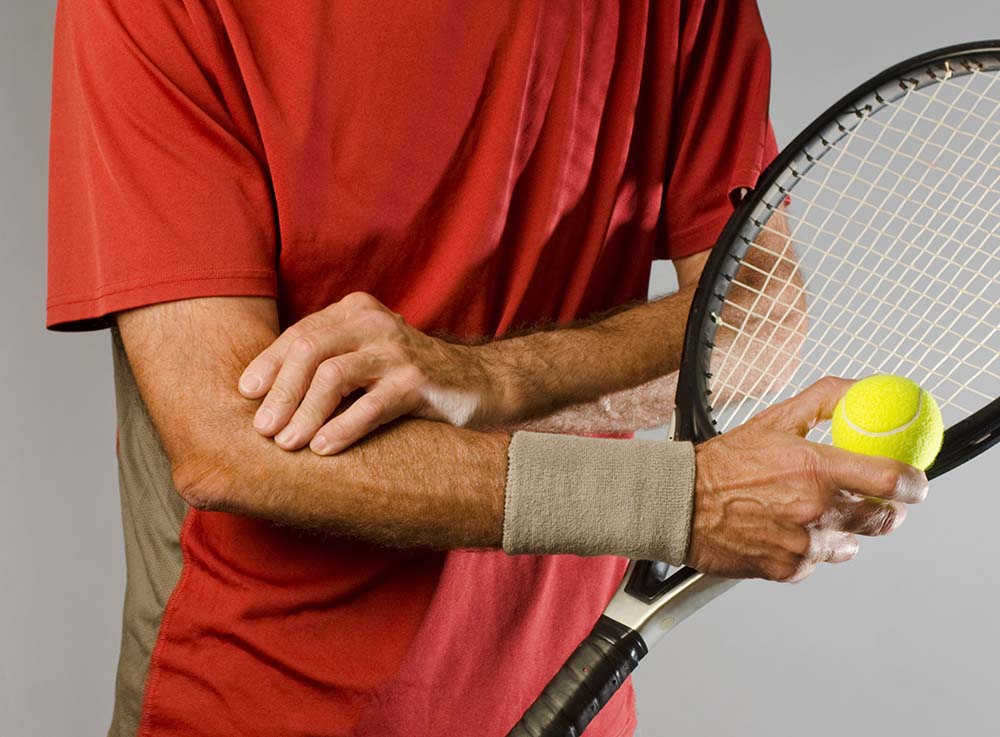Your tendons have the important job of connecting your muscles to your bones. Without tendons, your muscles would contract but not actually move or stabilize your body. As physical therapists, we often help unhappy people with unhappy tendons become happier. Having healthy and “happy” tendons means they can tolerate the loads put on them by muscles.
Like other tissues in our body, tendons respond to the forces and stresses we put on them. If you don’t use certain muscles very often, their tendons will grow relatively weaker and less able to tolerate heavier use. If there is a sudden increase in the use of a tendon beyond what it is used to, it might become inflamed. This is what we call tendonitis.

Tendonitis can theoretically occur anywhere in the body where there is a tendon, but certain tendons tend to take higher loads and more frequent use and are, therefore, more susceptible to injury and irritation. Examples include the knee (patellar tendons), ankles (Achilles tendon), hips (gluteal tendons, hip flexor tendons), shoulder (rotator cuff tendons), and elbows (“golfer’s elbow” and “tennis elbow”).
Tendonitis is a pesky injury that can turn into a chronic problem if not treated properly. Let’s zoom in on the tendons of the elbow for an example of what can cause tendonitis and what can help reduce and prevent tendonitis.

Overuse injuries are unfortunately common at the elbow, and they generally fall into two broad categories: “Tennis elbow” and “golfer’s elbow.” Tennis elbow or “lateral epicondylitis” is a pain in the tendons and where they attach on the outside of the elbow. These tendons would be stressed when hitting a backhanded shot in tennis because muscles whose tendons attach here act to bring your wrist backward and stabilize your hand and wrist while gripping.
Golfer’s elbow, or “medial epicondylitis,” is pain on the inside of your elbow, which would be stressed during a swinging or throwing motion. The muscles that provide you with a powerful grip have tendons that attach to the inside of the elbow so that repetitive gripping can once again cause irritation.

Activities other than tennis and golf can cause or be affected by these types of tendonitis. Activities such as playing an instrument, using garden tools, knitting or crocheting, and typing on a keyboard can all be problematic, especially if you are getting back into these activities after a break or suddenly increasing the amount of time doing these activities. Certain jobs requiring machines or tools, especially those requiring strong gripping and a lot of torque force, can cause tendonitis. Even daily activities such as cooking, doing your hair, or getting dressed can become painful in severe cases.
So, what can we do to treat or prevent tendonitis? A useful overall treatment strategy used by doctors of physical therapy is the EdUReP model: Education, Unloading, Reloading, and Prevention.[1]
The first step is Education about what the problem is, including what forces on the tendon are causing the inflammation and what activities, postures, or other musculoskeletal factors are contributing to it.
The next step is Unloading the tendon- give it a break. This often involves lessening, stopping, or altering certain activities that use the tendon. For the elbow, it may involve the use of a wrist or elbow splint to rest the tendons from certain positions or uses.
Next, you have to do controlled Reloading of the tendon. This is a phase of tendon rehab that is sometimes missed! It is not enough to unload the tendon and then resume normal activity. While this may relieve the pain temporarily, ultimately, the force that the tendon can handle has not been changed, and the tendonitis is likely to recur and become a chronic tendinopathy. To build tendon strength and improve its tolerance to load, the tendon has to be gradually loaded. This means making the muscle and tendon do work – but not overworking them to the point of re-aggravating the tendon.
A physical therapist is skilled at selecting and dosing the exercises that load a tendon and can help you navigate through how much pain and what sort of pains are okay vs. signs of progressing too rapidly. Certain types of exercises are often tolerated better at different stages of tendon rehabilitation. If the tendon and muscles are loaded at a therapeutic level to increase their strength, this will improve their tolerance to load over time and decrease pain associated with loading. Additionally, hands-on therapeutic techniques and stretching can aid in reducing tendon pain during the unloading and reloading stages.
The final step in the model is Prevention. This may include addressing weakness or poor mobility in the surrounding muscle groups and joints that interact with the elbow, such as the shoulder, wrist, and hand. It might also include retraining on how certain movements are performed. Teaching a proper stretching and muscle warm-up to perform before activity can also be useful.
If you have pain around your elbow or any joint preventing you from doing what you want, reach out to Wendy Webb Schoenewald Physical Therapy. One of the physical therapists will be happy to see if it is tendonitis that is causing your pain and help you through the process of coming back stronger so your pain goes away–and stays away.
[1] Todd E Davenport and others, The EdUReP Model for Nonsurgical Management of Tendinopathy, Physical Therapy, Volume 85, Issue 10, 1 October 2005, Pages 1093–1103, https://doi.org/10.1093/ptj/85.10.1093
Dr. Gregory Synnestvedt PT, DPT
WWS Physical Therapy and Vestibular Rehabilitation
Doylestown, Bucks County, PA.
(215) 489-3234

Leave a Reply